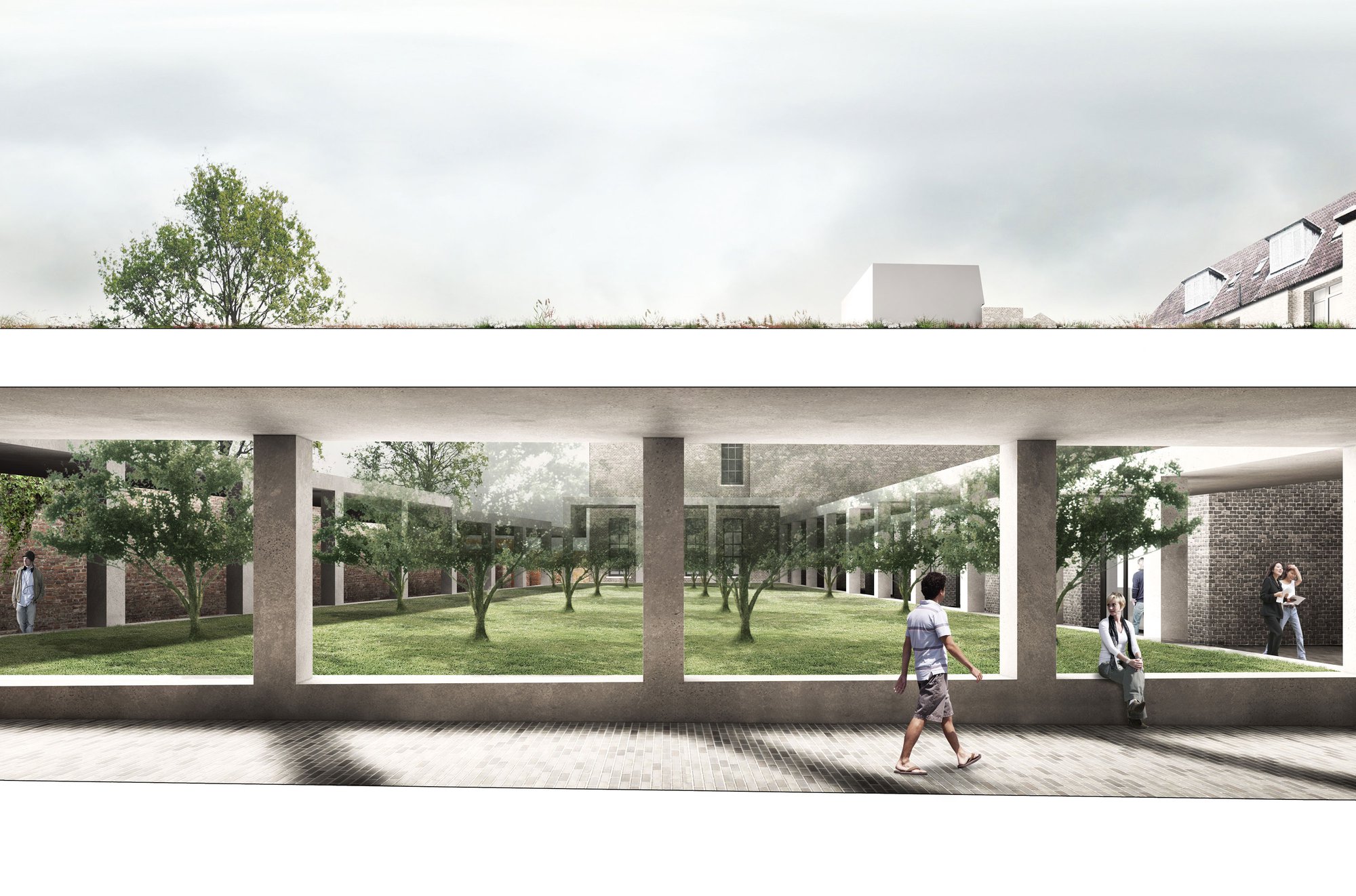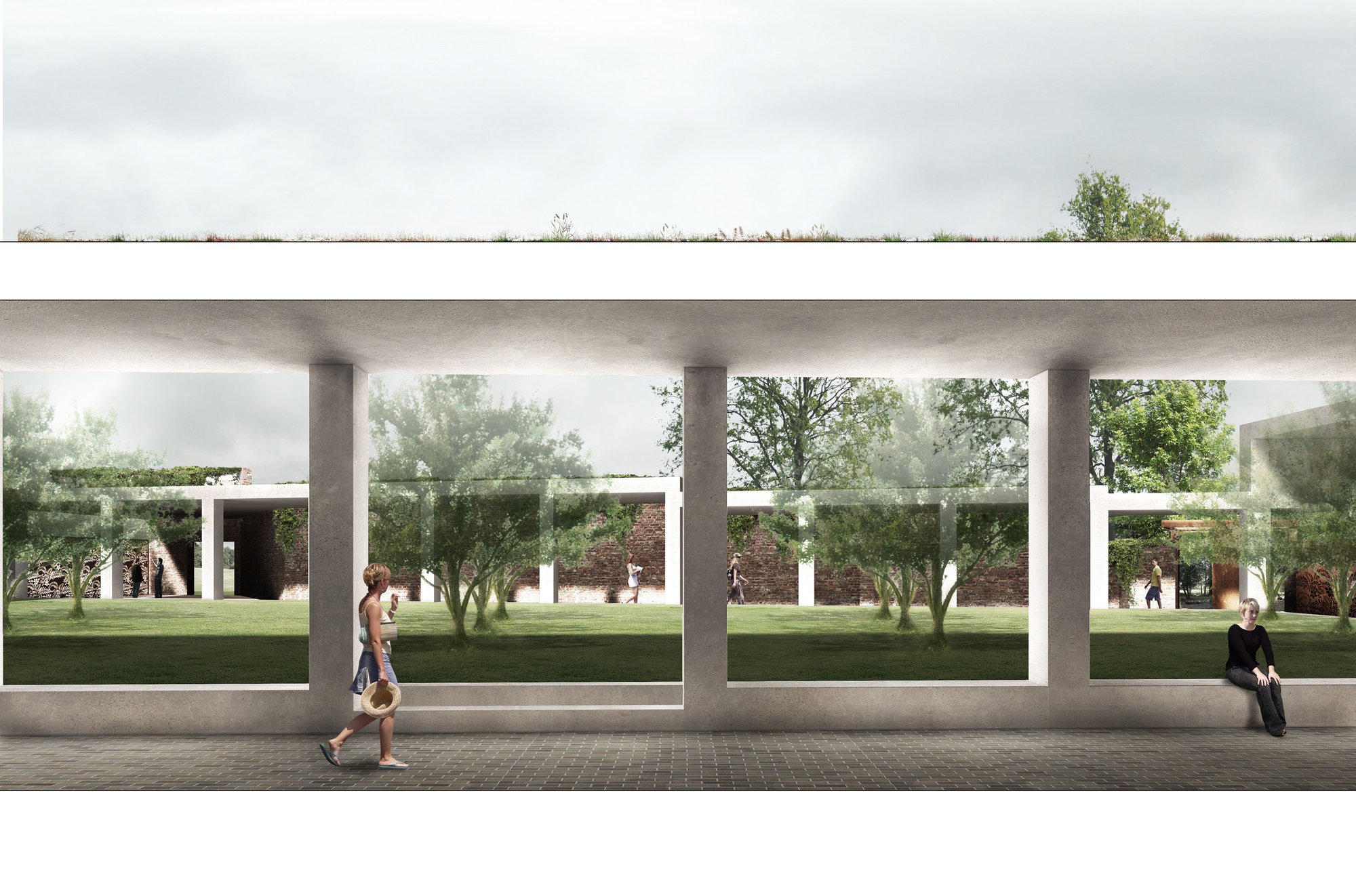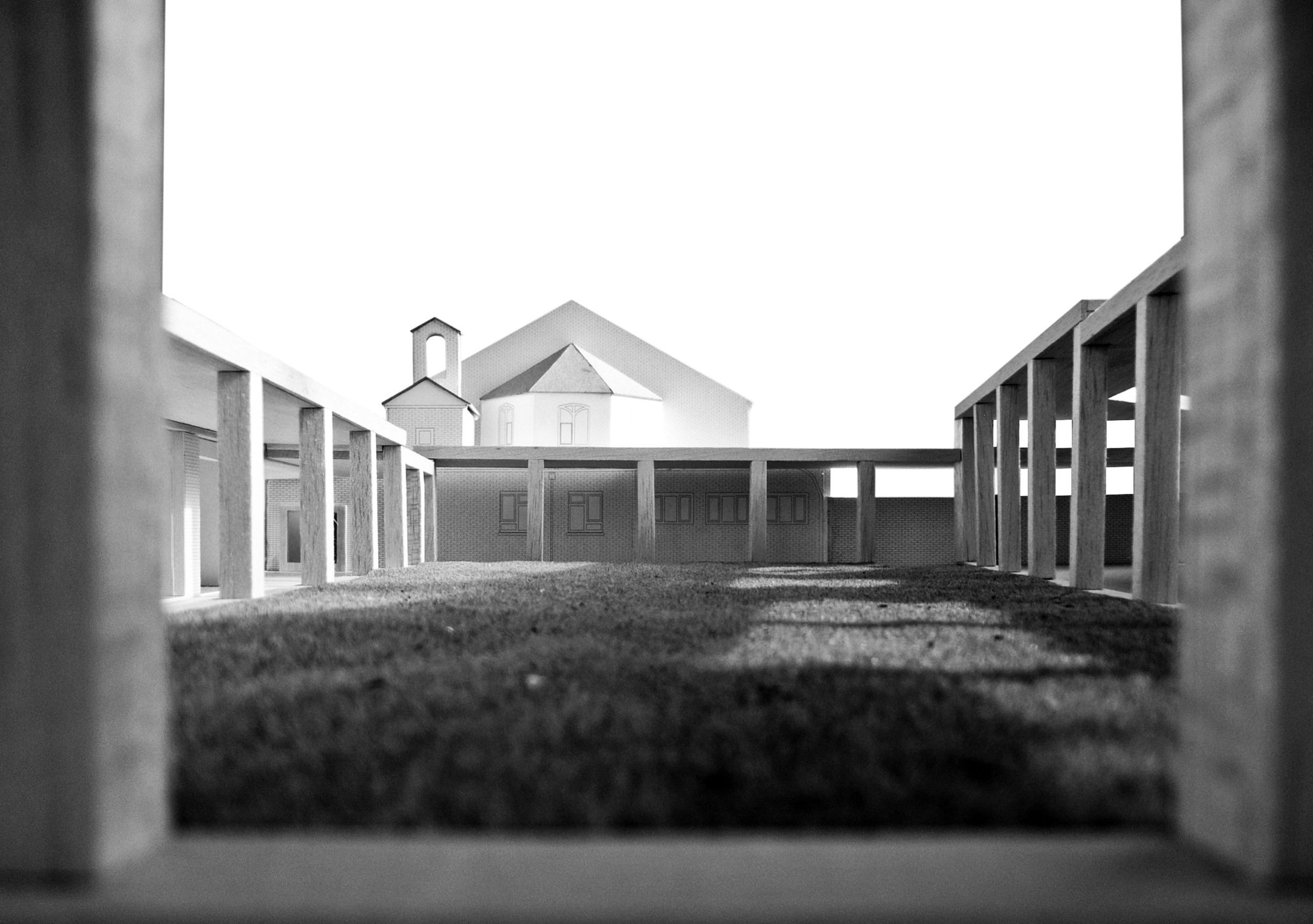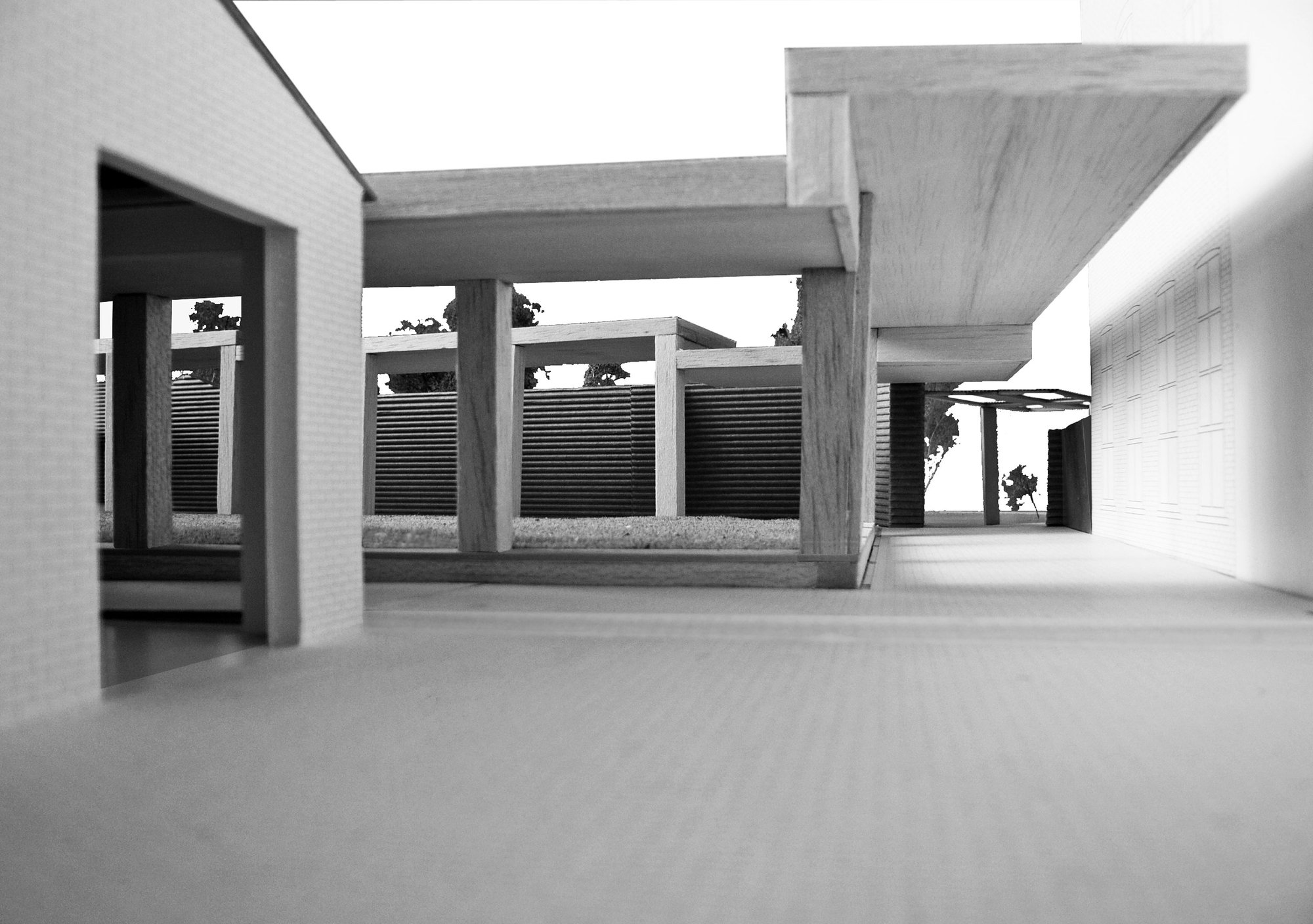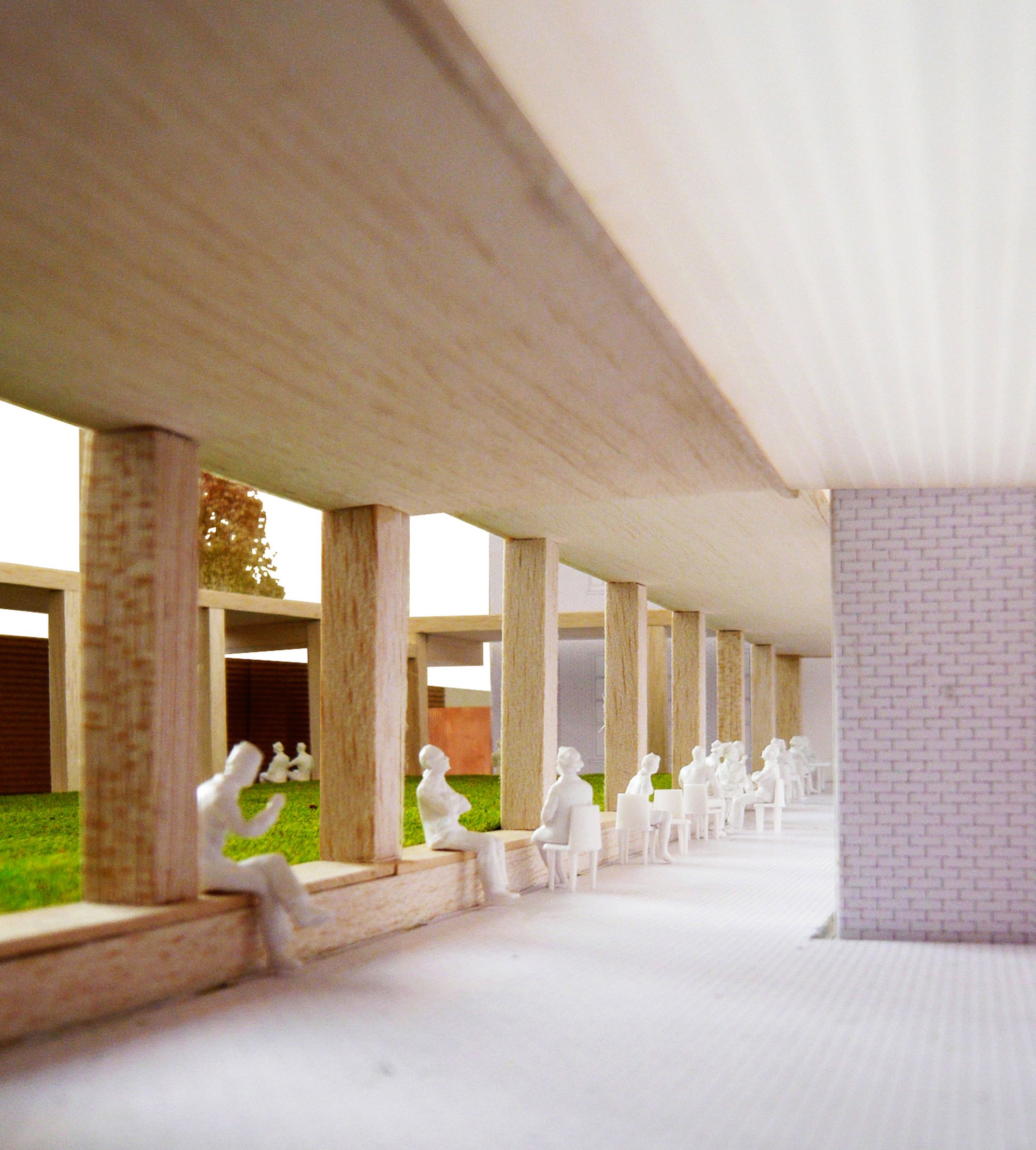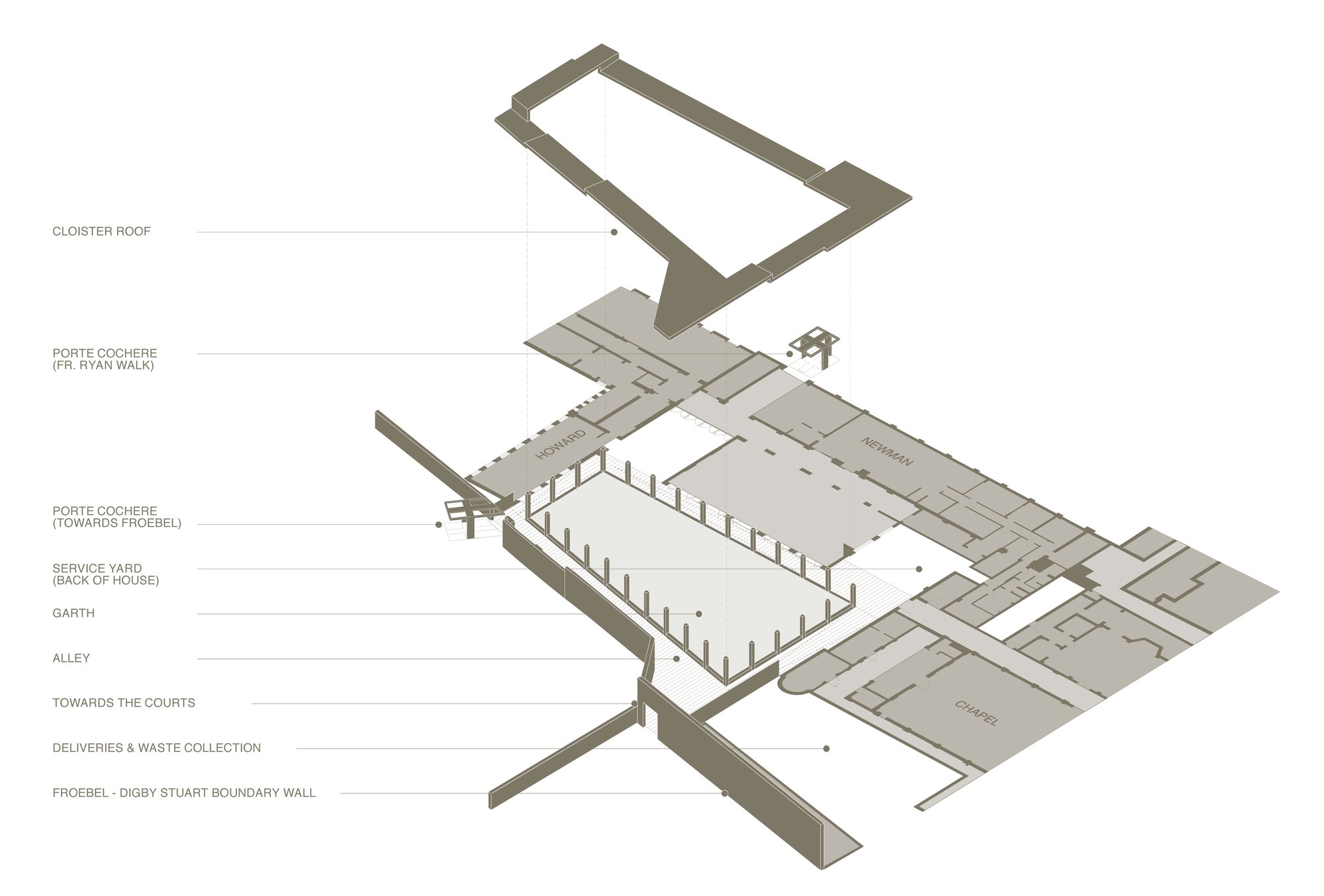Cloister, University of Roehampton
Roehampton
2009–
The cloister was planned to replace a service yard at the threshold between Froebel and Digby Stuart Colleges. Envisaged in our masterplan, it was both a piece of infrastructure and a symbolic addition to their estate. It allowed the university to harness an ecclesiastical form, the model for many of the Oxbridge colleges, at the heart of the campus. Due to changes in government policy the scheme was replaced by The Yard.



